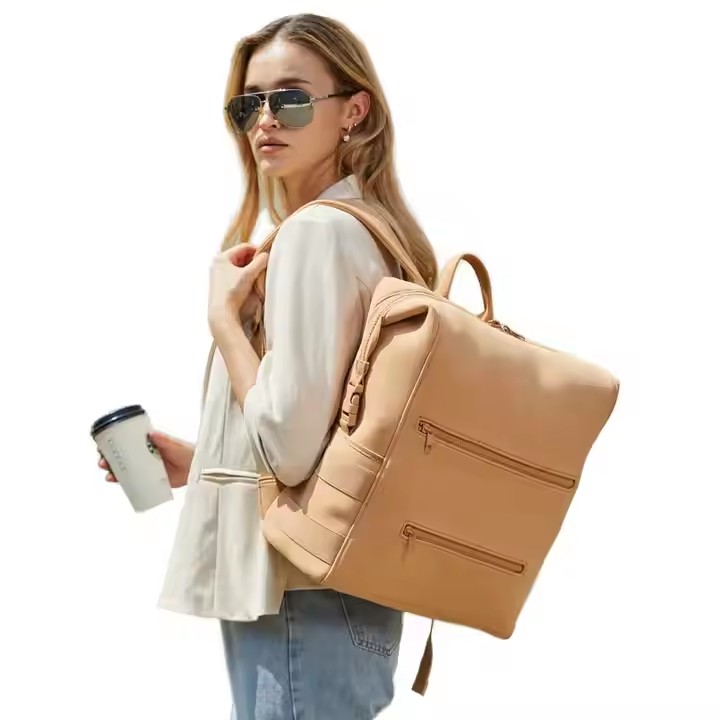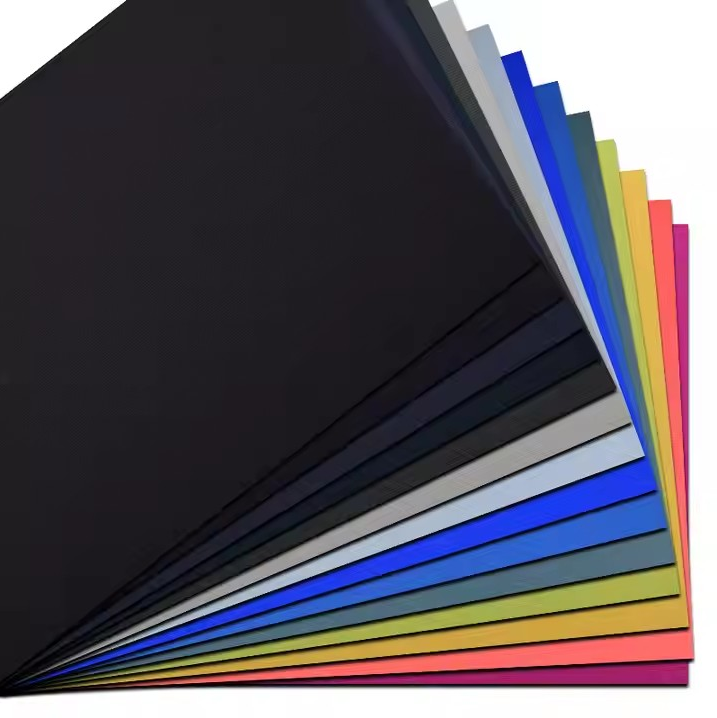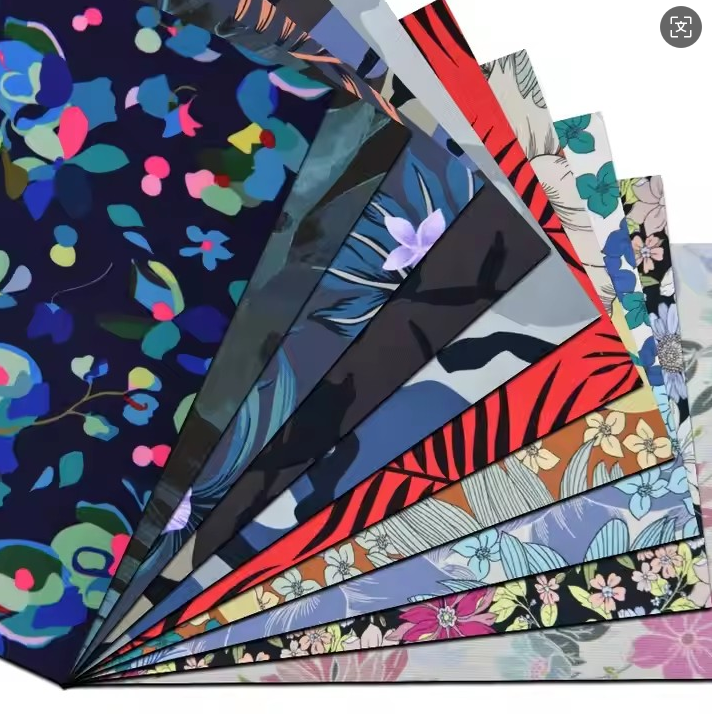
- 2025-07-11
The Complete Guide to Neoprene Bags: Material, Design, and Market Trends
The Complete Guide to Neoprene Bags: Material, Design, and Market Trends
As a retailer exploring the neoprene bag market, you're entering a dynamic segment that combines functionality with fashion-forward design. Neoprene bags have evolved from their utilitarian origins in water sports to become coveted accessories in urban fashion and luxury markets. This comprehensive guide will provide you with essential knowledge about neoprene material properties, design considerations, manufacturing processes, and current market trends to help you make informed purchasing and merchandising decisions.
Understanding Neoprene Material

Composition and Properties
Neoprene, scientifically known as polychloroprene, is a synthetic rubber composed of chloroprene polymers. This remarkable material was first developed by DuPont scientists in 1930 and has since become indispensable across numerous industries. For bag manufacturers and retailers, understanding neoprene's unique characteristics is crucial for product selection and customer education.
Key material properties that make neoprene ideal for bags include:
Exceptional durability: Neoprene maintains its structural integrity through repeated use and abuse, with high resistance to tears, abrasions, and general wear. Bags made from neoprene can withstand daily use far longer than many traditional materials.
Water resistance: The closed-cell structure of neoprene foam makes it naturally water-resistant—a property that originated from its use in wetsuits. This means neoprene bags protect contents from rain, spills, and moisture without requiring additional treatments or coatings.
Thermal insulation: Neoprene provides excellent thermal regulation, keeping items at stable temperatures. This makes it particularly valuable for lunch bags, wine carriers, or any application where temperature control matters.
Shock absorption: The foam-like structure cushions contents against impacts, protecting delicate items like electronics or glass bottles during transport.
Flexibility and shape retention: Neoprene stretches comfortably while maintaining its original form, allowing for bags that conform to contents without sagging or losing structure over time.
Chemical resistance: Unlike many materials, neoprene resists degradation from oils, solvents, and other chemicals that might damage ordinary fabrics.
Material Variations and Specifications
Not all neoprene is created equal, and understanding the variations will help you select the right products for your customer base:
Foam thickness: Typically measured in millimeters, ranging from 1mm (ultra-lightweight) to 7mm (heavy-duty). Thinner neoprene (1-3mm) works well for fashion bags and tech sleeves, while thicker versions (4-7mm) suit more protective applications.
Fabric facing: Most neoprene used in bags has fabric laminated to one or both sides. Common facing materials include:
Nylon/Lycra blends (for stretch and durability)
Polyester (for printability and colorfastness)
Specialty coatings (like PU for enhanced water resistance)
Density variations:
Low-density (softer, more flexible)
Medium-density (balanced performance)
High-density (more rigid, better structure)
Specialty neoprene types:
CR (Chloroprene Rubber) - The original formula with excellent all-around performance
SBR (Styrene-Butadiene Rubber) - More economical but with reduced chemical resistance
EPDM (Ethylene Propylene Diene Monomer) - Superior weather resistance
Environmental Considerations
Modern consumers increasingly demand sustainable options, and neoprene presents both challenges and opportunities in this regard:
Traditional neoprene is petroleum-based and not biodegradable, raising environmental concerns.
Eco-friendly alternatives now include:
Limestone-based neoprene: Uses calcium carbonate from limestone instead of petroleum, reducing carbon footprint by up to 30% 2
Recycled neoprene: Repurposed from manufacturing waste or post-consumer products
Plant-based alternatives: Emerging materials using natural rubber blends
Recycling challenges: While technically recyclable, neoprene's composite nature (often bonded with other materials) makes practical recycling difficult. Some brands now design for disassembly to facilitate recycling 4.
As a retailer, offering neoprene bags with clear sustainability credentials can be a significant differentiator in today's market.
Neoprene Bag Design Fundamentals
Structural Design Elements
Neoprene's unique properties enable innovative bag designs that combine functionality with aesthetic appeal. Understanding these design elements will help you evaluate product quality and match bags to specific use cases:
Seam construction:
Serged seams: Common in sportier designs, where threads wrap around fabric edges
Welded seams: Heat-sealed for waterproof integrity, increasingly popular in high-end designs 4
Laminated seams: Using adhesive tapes for a clean, minimalist look
Edge finishing:
Raw-cut edges for a sporty, casual aesthetic
Bound edges with fabric tape for a polished finish
Laser-cut precision edges in premium designs
Closure systems:
Zippers (water-resistant or standard)
Magnetic snaps
Drawstring tops
Roll-top designs for expandability
Handle and strap options:
Integrated neoprene straps (comfortable and stretchy)
Detachable webbing straps (for adjustability)
Leather or chain straps in fashion-forward designs
Ergonomic padded handles for comfort
Functional Design Features
Beyond basic structure, well-designed neoprene bags incorporate thoughtful features that enhance usability:
Organization systems:
Interior pockets (zippered, slip, or elasticized)
Key clips or leashes
Dedicated laptop/tablet compartments
Exterior quick-access pockets
Protective elements:
Padding in high-impact areas
Reinforced bases
Scratch-resistant linings for electronics
Carry options:
Crossbody configurations
Backpack conversions
Tote handles with drop lengths optimized for shoulder carry
Modular attachment points for accessories
Aesthetic Design Considerations
Neoprene's versatility allows for diverse aesthetic expressions across market segments:
Color treatments:
Solid colors (from vibrant brights to sophisticated neutrals)
Two-tone combinations
Ombré or gradient effects
Printed patterns (camouflage, florals, geometrics) 1
Surface textures:
Smooth matte finishes
Waffle or honeycomb textures
Embossed or debossed logos/patterns
Fabric-laminated looks (mimicking linen, denim, etc.)
Branding techniques:
Silkscreened graphics
Embroidered logos
Patches or appliqués
Laser-etched detailing
Hybrid constructions:
Neoprene paired with leather accents
Mixed-material panels (mesh, canvas, etc.)
Transparent PVC overlays
Understanding these design elements will help you curate a neoprene bag assortment that meets diverse customer needs while maintaining strong brand aesthetics.

Neoprene Bag Typology and Market Applications
Product Categories
The neoprene bag market encompasses several distinct product categories, each with specific design requirements and customer expectations:
Laptop/Tablet Sleeves:
Slim-profile protective cases
Standard sizes matching common device dimensions
Often feature microfiber linings and precise fits
May include accessory pockets for chargers, etc.
Everyday Carry Bags:
Crossbody/shoulder bags (typically 5-10L capacity)
Compact designs for urban commuting
Multiple organization compartments
Water-resistant zippers
Beach & Pool Bags:
Larger capacities (15-30L)
Drainage grommets for wet items
Sand-resistant materials
Bright, vacation-appropriate colors
Lunch & Thermal Bags:
Insulated compartments
Leak-proof linings
Easy-to-clean surfaces
Compact folding designs
Fashion Totes:
Oversized constructions
Structural rigidity despite flexible material
High-end finishes and details
Often hybrid designs with leather or metal elements
Specialty Bags:
Wine bottle carriers
Camera equipment bags
Yoga/gym bags
Diaper bags
Market Segment Considerations
Different consumer segments prioritize distinct features in neoprene bags:

Professional/Workplace:
Sophisticated aesthetics
Device protection
Organization features
Neutral color palettes
Student/Youth:
Affordable price points
Bold colors/patterns
Durable constructions
Hands-free carrying options
Fashion-Conscious:
Designer collaborations
Unique textures/colors
Brand visibility
Seasonal trends
Outdoor/Adventure:
Rugged durability
Maximum water resistance
Attachment points for gear
High-visibility elements
Eco-Conscious:
Sustainable material claims
Recyclable constructions
Natural colorways
Minimalist designs
Understanding these segment-specific needs will help you tailor your product selection and marketing messaging effectively.
Manufacturing and Quality Considerations
Production Processes
Neoprene bag manufacturing involves specialized techniques that differ from traditional bag production:
Material Preparation:
Neoprene sheets are typically delivered in rolls
Fabric lamination occurs before cutting in many cases
Precision laser cutting minimizes material waste
Assembly Methods:
Sewing requires specialized needles to penetrate dense material
Seam sealing often follows stitching for water resistance
Welding techniques create seamless joins in premium products 4
Finishing Processes:
Edge binding or taping
Hardware attachment (zippers, snaps, etc.)
Quality control for consistent thickness and density
Quality Indicators
When evaluating neoprene bag suppliers, consider these markers of quality:
Material Integrity:
Consistent thickness throughout
Even lamination without bubbles or peeling
Uniform density without weak spots
Construction Quality:
Reinforced stress points (corners, strap attachments)
Straight, even stitching
Properly aligned patterns/graphics
Smooth zipper operation
Performance Testing:
Water resistance validation
Seam strength tests
Colorfastness ratings
Abrasion resistance
Certifications:
<ul style="margin-top: 4px; padding-l
Hits: 【Print】




 Send Email
Send Email